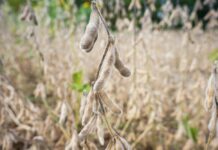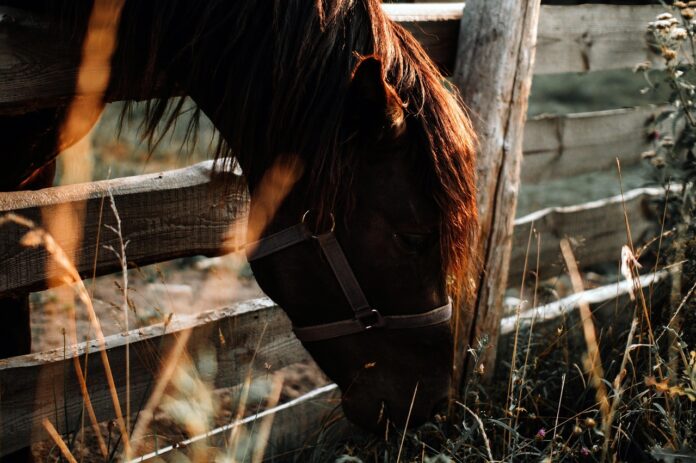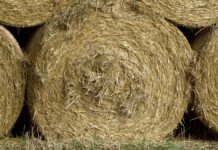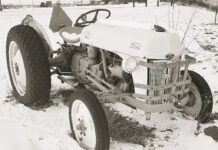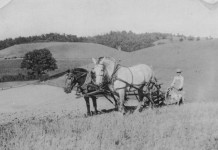Ohio has made its mark on the map as one of the top states in horse populations; here in Geauga County, we are estimated to have well over 8,000 horses. In the utopian ranges of the west, wild horses might roam up to 25 miles a day in search of food, water and shelter. This continual movement over miles of landscape allows their manure and urine to quickly dissipate.
But confined within fences, domestic horses can chew down, tear up and compact a piece of land like no other in record-breaking time. Soon, green pastures become laden with waste, mud and sediment. The challenge for every horse owner is managing manure. Regardless of the stable size or situation, there are always steps we can take to improve the health of our soil and water by better managing our horse manure.
Manure mathematics
The average horse produces about 60 pounds of manure and 2.5 gallons of urine every day. Once soaked into the bedding, this waste can double or even triple, leaving you with nine tons of waste per year. That amounts to 25 cubic yards per year for one horse, which is equivalent to a 10-foot-by-10-foot room of horse poop nearly 7 feet high. Now that’s a bunch of horse manure!
Weather can also intensify the problem. This year’s winter has been replaced by a season of sogginess. The unfrozen ground continues to bring the challenges of saturated soils and muddy mayhem into our pastures.
Though it may seem overwhelming and often falls to the bottom of the list, planning for (and paying for!) manure management is an essential part of owning horses. As horse lovers and land stewards, let’s pull up our muck boots and revel in the wisdom of two fitting proverbs: a little planning goes along way and practice makes perfect.
Potential pollutants
What we do on our property indeed affects our neighbors and the health of our nearby streams, lakes and rivers. This is because as rain and snowmelt flows across the land, this “stormwater” picks up non-point source pollutants in its path, as it travels to the nearest stream or as it soaks into the ground.
Water that flows across horse properties picks up nutrients, ammonia, salts and bacteria from manure and sediments from bare soil. These excessive nutrients, sediments and pollutants in runoff can cause undesirable plant growth, harmful algal blooms, decreased oxygen levels, fish kills and other potential animal and human health risks in nearby freshwater bodies. Making small changes to our operations and behaviors can help capture storm water, filter pollutants, improve soil health and ultimately keep our water safe and horses healthy.
The golden rules
The good news is that planning for manure not only protects our soil and water resources but ultimately benefits you. The more you effectively manage manure, the more you will also be improving chore efficiency, preserving better pastures, protecting horse health, improving your property aesthetics, decreasing pollutants, eliminating complaints and ultimately saving your time and money.
Throughout the process of evaluating your equine facility and developing a practical, functional manure management plan, let the following golden rules guide your decisions:
1. Keep clean water clean. Use the natural flow and topography of your property along with grass ditches, berms and gutters to divert clean runoff from your paddocks, barn, manure storage and heavy use areas. Capture clean roof water in gutters and use downspouts to route it away from barnyard mud and manure. Management of clean water is vital near streams and drainage ways.
2. Keep your heavy-use areas high and dry. Review your land’s slopes, drainage, soils, vegetation and proximity to streams, neighbors, wells and waterways. Keep confinement areas out of floodplains and use buffer strips to separate paddocks, barnyard and manure storage areas from waterways.
3. Manage contaminated runoff. Ensure runoff from manure areas does not enter creeks and streams by diverting it to low-gradient vegetative buffers, keeping manure piles covered and removing manure regularly.
As you begin to “pick through” to the countless options for handling and managing manure, remember that the planning component is critical. Step back and attempt to evaluate your operation through a new set of eyes. Research options, explore ideas and lean into your local natural resource agencies for technical assistance and property recommendations.
Geauga Soil and Water Conservation District is offering the 2025 Equine Environmental Stewardship Workshop May 29 from 9 a.m. to 3 p.m. at the Geauga County Office Building in Chardon, Ohio. Join resource professionals from Geauga SWCD, Geauga County Farm Bureau, the Ohio Department of Agriculture, Ohio State University Extension and the U.S. Department of Agriculture Natural Resources Conservation Service for this comprehensive program on horse manure and facility management. Lunch will be provided by Geauga County Farm Bureau and Equine Environmental Stewardship recognition signs will be distributed to farms upon completion of this workshop. Visit geaugaswcd.com or call 440-834-1122 for more information and register by May 21.
Remember that new practices don’t need to be costly. Sometimes a slight change will achieve the desired result. Commit to doing the best you can with what you have and accept that horse ownership is a journey. Your soil and water conservation district is here to help you manage manure so you’ll be enjoying happier trails ahead!





